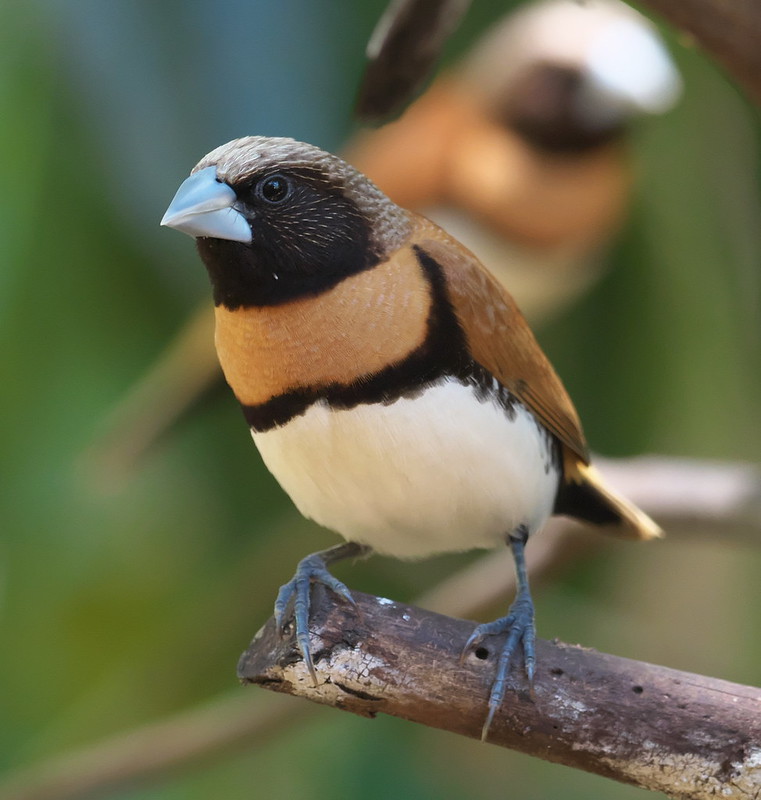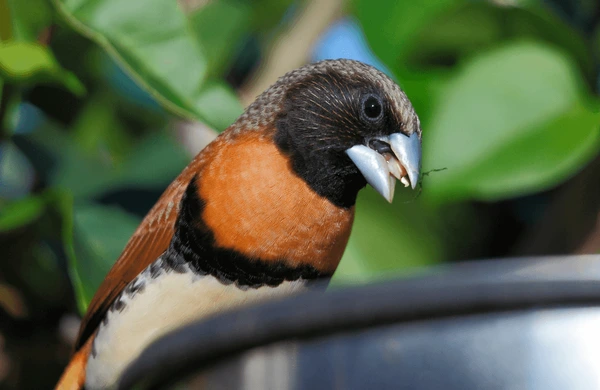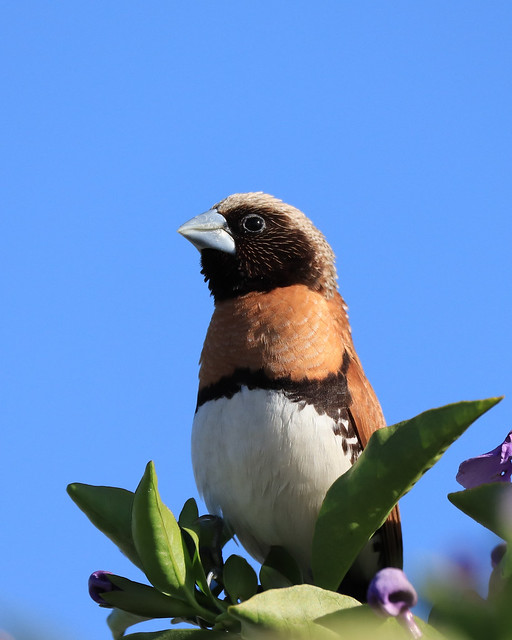The Chestnut-breasted Mannikin primarily feeds on grass seeds, which are abundant in its natural habitat.

It is an adept forager, often seen feeding on the ground or perched on grasses to collect seeds.



During the breeding season, it may supplement its diet with insects to provide extra protein for its young. These birds are highly social, often feeding in large groups, which can help protect against predators. In captivity, they thrive on a diet of seeds, grains, and fruits, making them popular among bird enthusiasts.




Breeding in Chestnut-breasted Mannikins typically occurs during the wet season when food sources are plentiful. The birds build dome-shaped nests from grass and other plant materials, often hidden in dense vegetation. Both parents participate in building the nest and caring for the eggs, which typically hatch after about 12-14 days of incubation. Once hatched, the chicks are fed by both parents until they are ready to fledge, usually after three weeks. The cooperative breeding behavior of this species ensures high survival rates for the offspring.